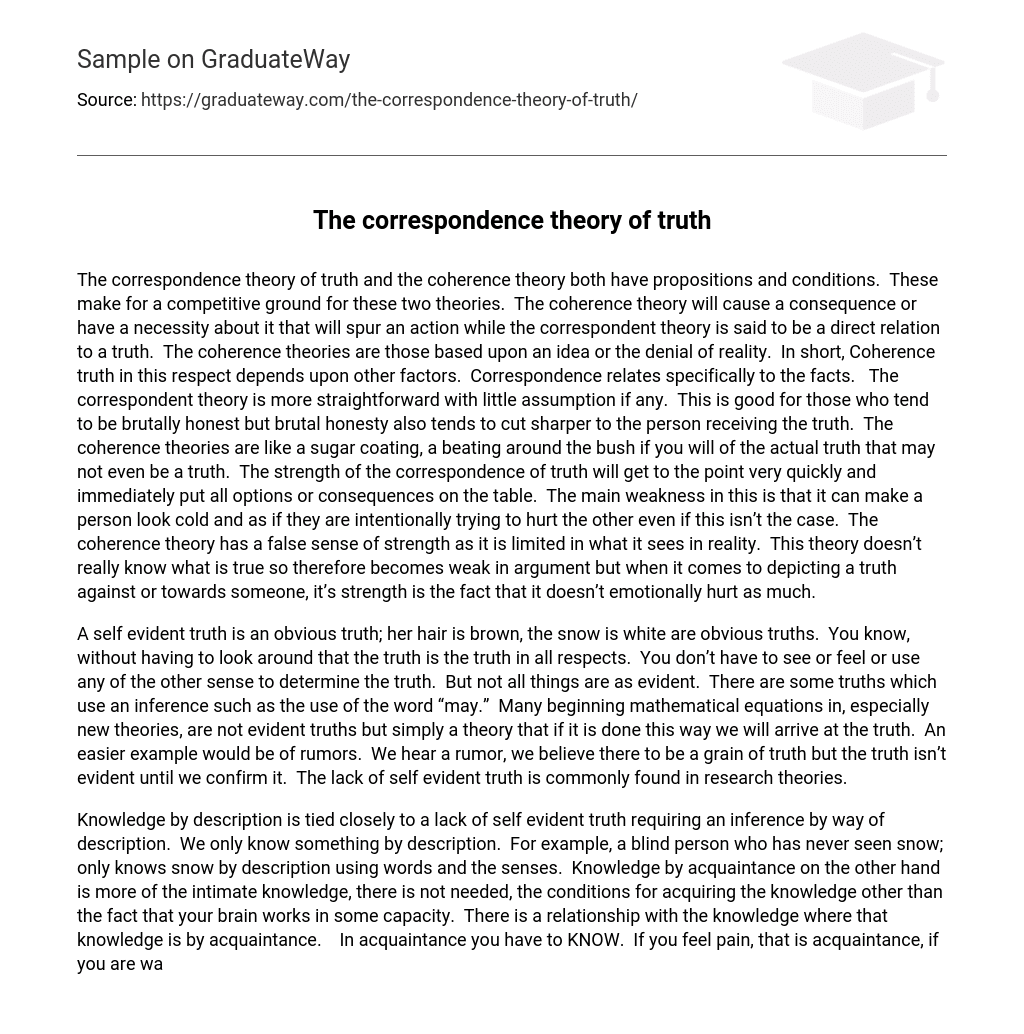The correspondence theory of truth and the coherence theory both have propositions and conditions. These make for a competitive ground for these two theories. The coherence theory will cause a consequence or have a necessity about it that will spur an action while the correspondent theory is said to be a direct relation to a truth. The coherence theories are those based upon an idea or the denial of reality. In short, Coherence truth in this respect depends upon other factors. Correspondence relates specifically to the facts. The correspondent theory is more straightforward with little assumption if any. This is good for those who tend to be brutally honest but brutal honesty also tends to cut sharper to the person receiving the truth. The coherence theories are like a sugar coating, a beating around the bush if you will of the actual truth that may not even be a truth. The strength of the correspondence of truth will get to the point very quickly and immediately put all options or consequences on the table. The main weakness in this is that it can make a person look cold and as if they are intentionally trying to hurt the other even if this isn’t the case. The coherence theory has a false sense of strength as it is limited in what it sees in reality. This theory doesn’t really know what is true so therefore becomes weak in argument but when it comes to depicting a truth against or towards someone, it’s strength is the fact that it doesn’t emotionally hurt as much.
A self evident truth is an obvious truth; her hair is brown, the snow is white are obvious truths. You know, without having to look around that the truth is the truth in all respects. You don’t have to see or feel or use any of the other sense to determine the truth. But not all things are as evident. There are some truths which use an inference such as the use of the word “may.” Many beginning mathematical equations in, especially new theories, are not evident truths but simply a theory that if it is done this way we will arrive at the truth. An easier example would be of rumors. We hear a rumor, we believe there to be a grain of truth but the truth isn’t evident until we confirm it. The lack of self evident truth is commonly found in research theories.
Knowledge by description is tied closely to a lack of self evident truth requiring an inference by way of description. We only know something by description. For example, a blind person who has never seen snow; only knows snow by description using words and the senses. Knowledge by acquaintance on the other hand is more of the intimate knowledge, there is not needed, the conditions for acquiring the knowledge other than the fact that your brain works in some capacity. There is a relationship with the knowledge where that knowledge is by acquaintance. In acquaintance you have to KNOW. If you feel pain, that is acquaintance, if you are walking, that is acquaintance. The form of acquaintance is steadfast and can result in faster answers of a more realistic nature whereas by description is an imaginative use where there is not concrete evidence to support the knowledge.





